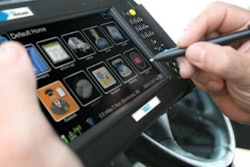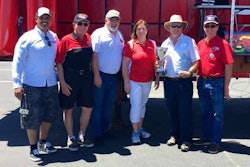The Federal Motor Carrier Safety Administration will undertake a pilot program to gauge the feasibility of adding more split sleeper berth options to hours of service regulations.
FMCSA says it seeks at least 200 drivers to participate in the study. Those interested in participating should visit sleeperberthstudy.com to complete an application.

The agency’s split sleeper berth pilot program seeks to determine the effects other split sleeper berth options, such as 5-5, 6-4 and 7-3 would have on drivers and their fatigue levels. The study’s outcome could dictate whether FMCSA decides to pursue reforms to hours of service regulations pertaining to split sleeper berth flexibility.
According to the study’s website, once enrolled in the study, drivers will:
- Be allowed to use the flexible sleeper berth exemption under the study guidelines during any duty periods you choose (see below)
- Use the standard 10 hours off duty or “8+2” rule on all other duty periods
- Have your truck equipped with an onboard monitoring system, including a camera facing you and a camera facing the road to monitor driving patterns
- Wear a wrist activity monitor to record your sleep patterns
- Track hours of service using a custom Electronic Logging Device (ELD) provided by the study
- Spend no more than 30 minutes a day using a study-provided smartphone to:
- Completing a sleep diary and caffeine log
- Performing reaction time assessments
- Record your sleepiness
- Have a brief weekly phone call at your convenience to check in with the research team
- Earn up to $600 for completing all components during the 3-month study
The following regulations will still be in effect:
- 11 hour driving limit
- 14 hour duty limit
- 34 hour restart break
- 30 min breaks required
In addition, a study-related exemption will be issued from FMCSA to participating drivers:
- A driver may split their 10 hours of required rest into two sleeper berth periods
- Minimum of 3 hours per rest and together equaling at least 10 hours
- Any sleeper berth period that is combined with a second sleeper berth period is excluded from calculation of the 14-hour duty period
- When the second sleeper berth period of a split occurs, the recalculation of the 14-hour duty period starts at the end of the first sleeper berth period
- During each duty period, drivers may choose to operate under either the current regulations or the study-related exemption
- No mixing of exemption and non-exemption is allowed in the same duty period
Public comments about the study are being accepted for 60 days, giving carriers and drivers the chance to provide the agency with input about the study and how it should proceed. The comment period opens Tuesday and will be available at the regulations.gov rulemaking portal via Docket No. FMCSA-2016-0260.








